If you’re new to the world of knitting, then the equipment you need might seem a bit daunting – what do you actually need? What brand should you choose? Even if you’re a well seasoned knitter it can be confusing!
Before I learnt how to knit, I wanted to check that I could actually perform this mystical looking art before spending out on equipment. So I grabbed some chopsticks, a scrap bit of yarn and sat down with a youtube video (you can see the result here). So you really can knit with the bare essentials! The equipment you need really depends on the type of knitting you’ll do. So if you had to narrow it down, what do you really need to learn to knit? If you’re a more experienced knitter, look out for future posts building on the equipment list.
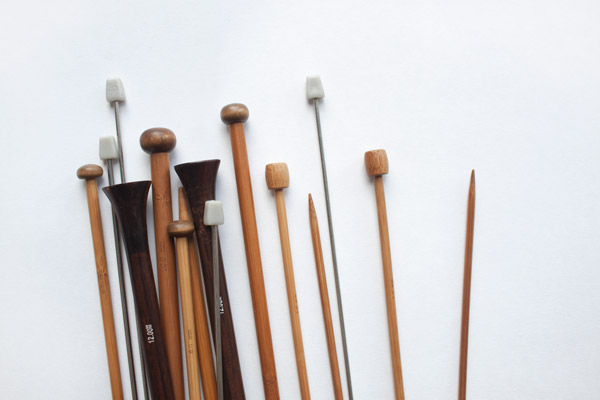
1. Needles
Can’t go far without these. But which ones? If you’re a complete beginner, then I would recommend 4mm straight needles. 4mm is the most common needle size used in patterns, particularly for DK yarn (double knitting – the most common yarn size) so it’s great for beginners. Then there’s the question of what type – metal, wooden or plastic? That depends on what you feel most comfortable with. I started with metal pony needles like these, as they are the easiest to find in shops. However I now find them quite hard to knit with. Different types of needles have different qualities, the slippery nature of metal needles makes it easier to slide yarn over the needle, which is good if you have a yarn that catches easily. They are also useful for knitting at small sizes, as the stronger material is unlikely to bend or break. On the downside, metal needles tend to be slightly heavier, and might be a bit hard on your hands if you have arthritis.
I use bamboo needles, so I can tell you more about those than the others. This also applies to other wooden needles – Wool and the Gang do a lovely set of rosewood needles. Bamboo needles are very light, which is great if your knitting is getting heavy! They’re smooth under the hand and not cold, which is one of the things I dislike about picking up metal needles. If you’re using a slippery yarn like cotton, it makes it much easier to control the yarn as the wood grips it better. They’re not so great at small sizes because they can get quite bendy, and break quite easily. Saying this, I’ve only broken one needle so far! (Touch wood).
I’ve never used plastic needles, and I haven’t seen many in the shops so I can’t tell you much about these!
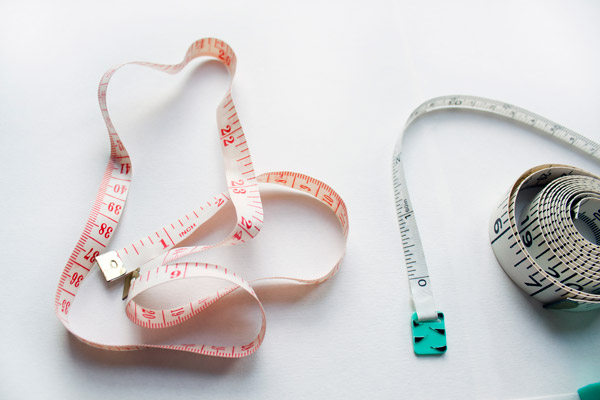
2. Tape Measure
This is an item that you may well have already, but if not then you will definitely need one. They are not expensive and are often given away free with knitting magazines. You’ll want one that has both centimetres and inches on it, as different patterns will use different units.
Tape measures are needed to make sure you are knitting to the right size. Tension is measured in a 10x10cm or 4×4″ square. I’ve seen a square rule with the measurements around the edge which would be useful! But a simple tape measure is all you really need.
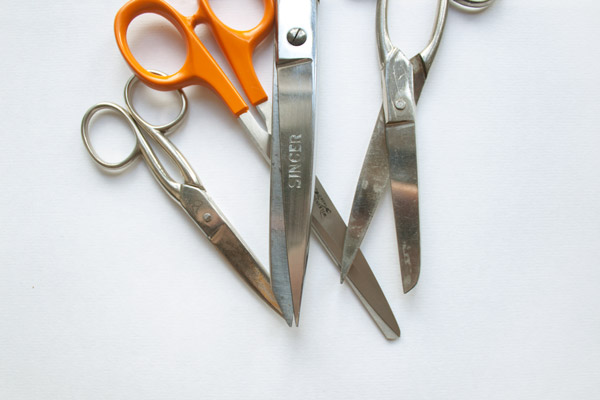
3. Scissors
You almost definitely won’t need to buy a pair of these. Not much to say here, how else are you going to cut the yarn when you’re finished?
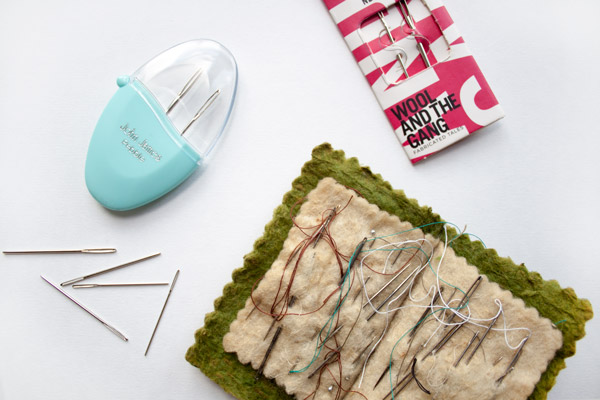
4. Tapestry Needle
I didn’t have one of these when I first started knitting. It’s basically a normal sewing needle with a much bigger eye and a blunt end so you don’t catch the delicate yarn fibres. You can get away with using a normal sewing needle if you are using DK yarn or smaller – it will say on the ball band what size yarn you have. It’s easier with a tapestry needle, and you will certainly need one if you are knitting with a chunky yarn. You’d never thread the needle otherwise!
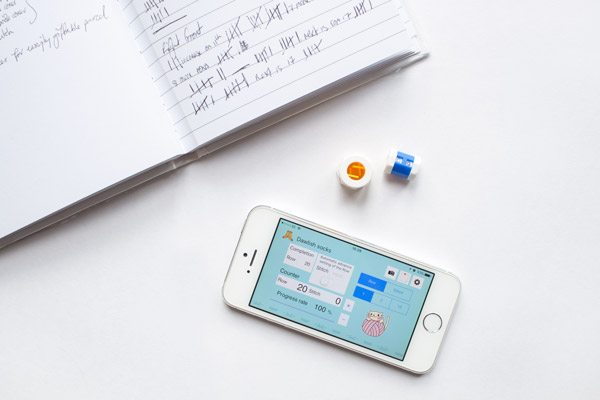
5. Row Counter
In some patterns it’s necessary to count the rows you are doing before the next instruction, or perhaps you’re knitting socks and need to do the same amount of rows on the second sock.
There are different ways of doing this. You could buy a row counter, which is a small plastic item that you slide on to the end of your needle. To count the rows simply turn it until the next number appears in the window. This one is good because it’s always with your project.
The most basic way (and which I do quite a lot) is to count on paper. The only trouble with this is you need to make sure not to lose the notebook!
What I’ve been using most recently however is an app. There are several out there, so have a look for yourself, but the one I use is simply called ‘Knit’. I find it useful because you can input a finish number, meaning you don’t have to keep checking your pattern for how many rows you’re supposed to be doing. You can also store multiple projects on here, for those of you who have several knits on the go (maybe you’d be interested in my ‘Top 5 Tips for Finishing Projects’ post?).
So there you have it, I hope that’s made things simpler if you’re looking to learn to knit!

One thought on “Essential Equipment for Beginner Knitters”